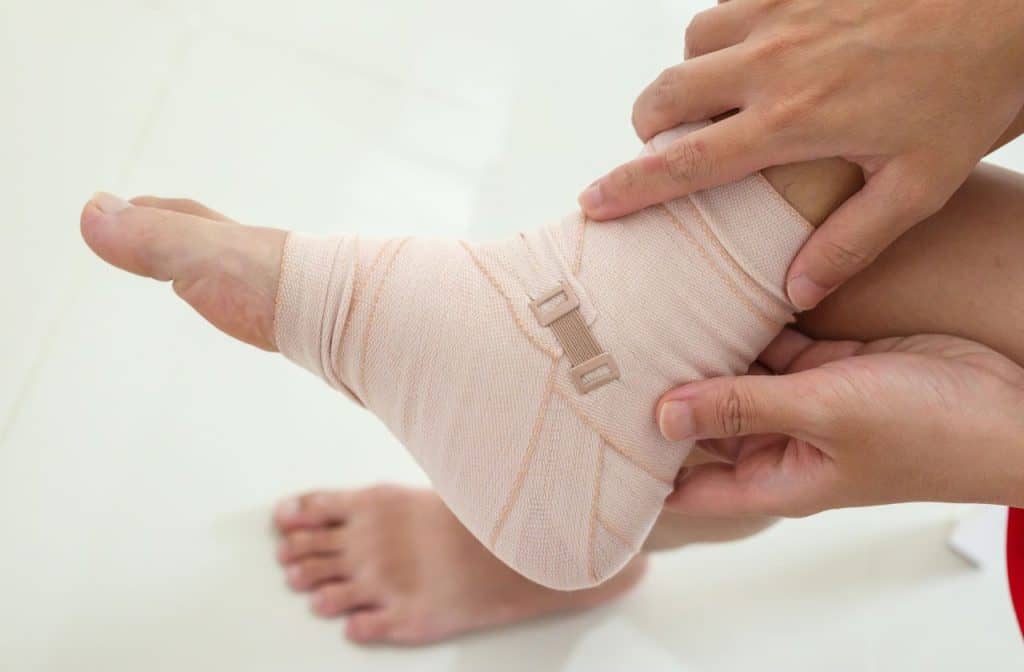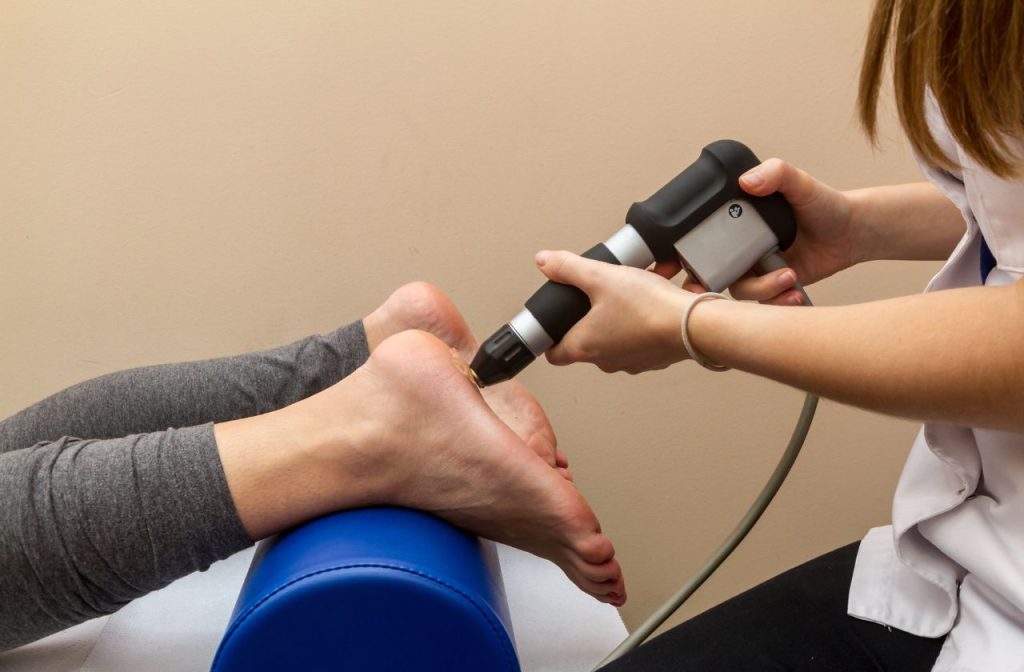Are your daily steps accompanied by persistent foot pain? At Advance Foot Clinic Podiatry, we’ve recently added a brand new technology to our treatment toolkit – Shockwave Therapy. Our experienced team of podiatrists have already seen fantastic results using shockwave treatment to treat chronic painful foot and leg conditions. If you’re struggling with enduring foot, ankle or leg pain, shockwave treatment is one avenue to help you get back on your feet doing what you love.
Understanding Shockwave Therapy

Let’s start by unravelling the mystery behind shockwave therapy. Also known as extracorporeal shockwave therapy (ESWT), this non-invasive procedure employs acoustic waves to stimulate healing in injured tissues. The shockwave machine itself consists of a base machine responsible for generating the waves, and a handpiece which is applied to the skin and directs the generated waves into the injured tissue. These waves are precisely directed to the affected area, triggering increased blood flow and cellular regeneration.
The Mechanism of Shockwave Treatment
The magic of shockwave treatment lies in its ability to kickstart your body’s inherent healing mechanisms. The acoustic waves generate microtrauma in the targeted tissues, initiating a cascade of biological responses. This process enhances blood circulation, expedites tissue repair, and mitigates inflammation – all vital factors in healing from pain. Shockwave can also be an option to encourage the breaking up of scar tissue built up from chronic inflammation and damage. It can encourage break-up of bone spurs such as heel spurs which often interfere with recovery from plantar fasciitis and Achilles tendinopathy.
When to Consider Shockwave Therapy
Conditions such as plantar fasciitis, Achilles tendinopathy, and other musculoskeletal issues may benefit significantly from shockwave therapy. If traditional treatments have fallen short, shockwave treatment might be the key to unlocking relief.

Identifying Chronic Conditions suitable for shockwave therapy
Lower limb injuries are generally classified into two categories: acute and chronic. Acute injuries are those which have recently become painful, usually within the last month. Chronic injuries are those which have persisted for over a month or two and are not improving. Generally speaking, the goal of shockwave therapy is to encourage the body back into the ‘acute’ stage of an injury where repair and remodelling occurs. This means that shockwave is ideal in the case of chronic conditions where recovery progress is stagnating.
Shortcomings of Conventional Treatments

While over-the-counter pain relievers, foot taping and rest can provide temporary respite, they often fail to address the root cause of chronic foot pain. Treating a chronic condition with measures meant for short-term injuries can just mean longer suffering. Shockwave therapy offers a targeted approach, not just alleviating symptoms but also promoting long-term healing.
Non-Invasive Nature of Shockwave
For chronic, non-responsive conditions, surgery treatment is often considered. Surgical interventions come with inherent risks and extended recovery periods. In contrast, shockwave therapy is non-invasive, eliminating the need for lengthy downtime and allowing for a quicker return to daily activities. With shockwave therapy, the risks of adverse effects are minimal. Most individuals experience only mild discomfort during the procedure and can resume normal activities shortly after.
What to Expect During a Shockwave Therapy Session
Your Initial Consultation
Your journey from pain to healing begins with a comprehensive consultation at one of our Advance Foot Clinic Podiatry locations. Our expert podiatrists will discuss your medical history, assess and diagnose your condition, and determine if shockwave therapy is the right fit for you. An important part of this consultation is an accurate diagnosis, as not every condition will be suitable for shockwave treatment. Additionally, our podiatrist will rule out any contraindications for the treatment, such as deep vein thrombosis (DVTs).

The Shockwave Treatment Appointment
During the shockwave therapy session, you’ll be comfortably seated as our skilled podiatrists apply acoustic waves to the targeted area. The procedure is swift, typically lasting 10-15 minutes. The number of sessions required varies, but many patients experience significant relief after just a few sessions. The course of therapy will be frequent and close together (e.g. several appointments per week) in order to successfully kickstart the body’s healing process.
After Shockwave Therapy

After your shockwave therapy sessions, our team will provide guidance on managing any post-treatment discomfort. It’s crucial to follow our recommendations for optimal recovery and to maximize the benefits of the therapy. The area will likely feel slightly tender and may be slightly warm to the touch. Any temporary discomfort should fade quickly and is always weighed up against the long-term restorative effects of the treatment.
Long-Term Benefits
As your body continues to respond to shockwave therapy, you’ll likely experience a significant reduction in pain. Once the bodies’ healing process has been restarted by the shockwave treatment, your body will work hard to repair the rebuild the damaged tissues. During this time a period of rest may be beneficial. Once pain relief is achieved, your podiatrist will guide you through a rehabilitation and strengthening plan. The long-term goal of the treatment plan is for you to achieve a complete recovery from your injury, along with becoming much more resilient against further injury.
Advance Foot Clinic Shockwave Therapy
Our goal at Advance Foot Clinic is to provide you relief from pain and into a more active lifestyle, enabling you to enjoy activities that were once hindered by discomfort.
Shockwave therapy could be the transformative solution you’ve been seeking. At Advance Foot Clinic Podiatry, we’re dedicated to providing effective and innovative treatments.
Ready to take the first step? Contact us today to schedule your consultation and unlock the power of shockwave therapy.



